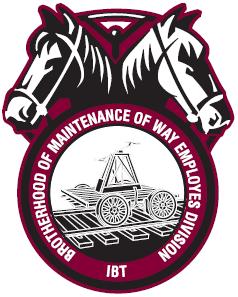WASHINGTON — BNSF Railway will be able to continue testing unmanned geometry cars in the Powder River Basin after a federal appeals court shot down a petition from one of the nation’s largest maintenance-of-way employee unions.
On Oct. 11, federal appeals court judges in Washington D.C. ruled against a lawsuit filed by the Brotherhood of Maintenance of Way Employes Division (BMWED) last year in an effort to overturn the Federal Railroad Administration’s approval of BNSF’s plan to test autonomous track inspection technology.
In 2018, the FRA gave BNSF permission to reduce the number of manual track inspections as required by law on seven different subdivisions in Wyoming and Nebraska. This allowed BNSF to conduct just two manual inspections per month on more than 1,300 miles of main and siding track between Lincoln, Neb., and Donkey Creek, Wyo., and back on the railroad’s Powder River Basin coal loop. The pilot program was broken down into four phases. During each phase the number of manual inspections were reduced while the number of unmanned inspections increased.
After the FRA published its notice of approval, the union filed a petition asking the agency to reconsider its decision. The union argued that two manual track inspections a month was not sufficient to keep the public safe. In early 2019, the FRA announced the ruling would stand. Afterwards, the union filed a petition for review in federal appeals court.
In the judgment published Oct. 11, the appeals court judges ruled the suspension of manual track inspections was “limited in scope” and “necessary” for BNSF to effectively test the usefulness of unmanned geometry cars.
Union officials say they disagree.
“The BMWED wants American railroads to be safe,” BMWED President Freddie N. Simpson says. “To have a set of human eyes inspect for defects. To know that the train your friend or family member is riding on won’t derail or the tankers that are pulling through your neighborhood will stay upright. We want a person, trained and personally familiar with their section of the railroad, responsible for keeping us safe.”
In recent years, Class I railroads have been experimenting with autonomous technology to inspect tracks and bridges. Earlier this year, Canadian National CEO JJ Ruest announced the railroad was deploying a fleet of unmanned track-inspection boxcars. BNSF has even experimented with having unmanned drones inspect tracks from above by taking thousands of detailed photos that can be analyzed by computer programs to spot broken rails or ballast fouling [See “Big Data,” November 2019 Trains]. “With artificial intelligence modeling technology, we can more precisely know in advance where our efforts are needed most and proactively plan,” BNSF spokesperson Amy Casas says.















Mr. McFarlane, actually a good track inspector knows what to look for to determine internal defects in the rail. Yes I cannot see inside the rail, but neither can the autonomous box cars bnsf is hauling around. To that effect you need water and ultrasonic testing. Oh and no more than 11 mph is required. All the test cars are looking at is geometry defects everything else a good inspector sees in addition to geometry defects are being ignored. Is the autonomous inpection car able to detect brush on the right of way, or that the trees need to be cut back frkm a crossing or whistle post sign? I think not. There is nothing wrong with additional inspections, but no inspections are a bad idea.
Why do the unions have to be hypocritical and say things like “The BMWED wants American railroads to be safe.” Sure – but what they really want is the jobs. So they should say something like “The BMWED represents the workers and our mission to keep our guys working. We will fight any moves by the railroad to reduce the number of jobs.” This is a perfectly honorable position to take as it is one of the reasons the union was formed in the first place.
The railroads do the same thing. Just say “Automation will help us reduce our manpower requirements and let us be more efficient – the savings can be reinvested in our plant or returned to the owners of the railroad.”
Dependent on cost this could allow railroads to increase the number of inspections. Also could some of this technology be locomotive mounted? Every time you run a train you get an inspection.
So, the members of the BMWED can see inside a railhead, they can see cracks smaller than the width of a human hair? Me thinks not but I’m pretty sure the autonomous track inspection cars can.
Regardless of what a human sees, or think they see, the mind may not fully digest something, especially when it is zero degrees, wind blowing, distractions, late in the shift, etc, the drone will capture live pictures and transmit them back. I have performed literally hundreds of bridge and structure inspections under contract. Rarely, if ever, did we have a camera, relying only on memory. Technology has changed the way the world functions. There are some great inspectors out there, and my comment is not to diminish their great worth and skill set. But it is time to accept what technology can fulfill, and embrace the enhancements of safety this presents.
In my humble opinion only here folks, based on 35+ years climbing on, above, and below the high iron. Be safe out there.